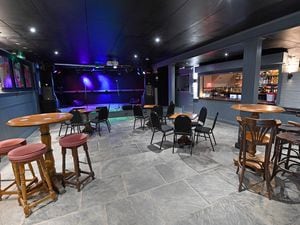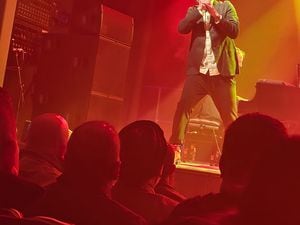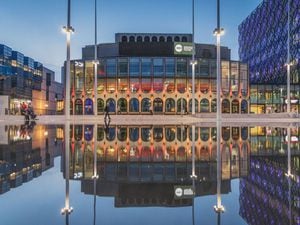Hamburg, Germany - travel review
Jamie Brassington tours the historic streets on a city break in Hamburg...
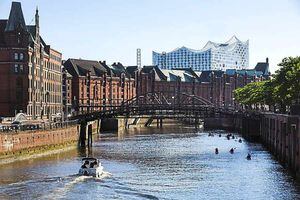
It was like stepping into a movie set. Tall, red brick-buildings lined the old canals. The district, once a thriving hub of activity, was now eerily quiet except for the faint echoes that bounced off the walls.
We were walking through the Speicherstadt, or the 'Old Warehouse City', a UNESCO World Heritage Site.
A castle-like restaurant awaited us several hundred yards away where we were to have lunch. It was sat on one of the bridges crossing the canal.
I had a Currywurst – a steamed (then fried) sausage topped off with a spicy ketchup and curry powder. It was an interesting combination.
The Restaurant, called Wasserschloss, proved a great setting to take in the surroundings. We were perched up on tables on an outside deck. I could make out cranes spaced out along the copper roof tops – which were used for winching up cargo into the warehouses for storage.
"The storage companies moved out about 25 years ago," my tour guide Paul Klein said. "And modern companies moved in for office space." Not much activity looked to be taking place.
But it was hard to picture a place with such beauty and outstanding architecture which is not too widely known about – well, outside of Germany anyway.
It was one of Hamburg's many distinctive districts. The Speicherstadt was built in the late 19th and early 20th century, with its buildings and architecture unique to Hamburg.
Around the corner was a newly-opened coffee museum, which housed all information and equipment about coffee. Coffee is important in Hamburg's history.
We were given a guided tour, seeing the old machinery and packaging used for the trade. Coffee was one of the main commodities stored in the warehouses, alongside others such as tea and carpet, which is why the museum had opened up in the Speicherstadt.

Also close by was 'Miniatur Wunderland' – the largest model railway in the world.
Exhibitions spanning multiple floors displayed tiny replicas of cities across the world – including Las Vegas and (of course) Hamburg.
The terrain, buildings and roads were laid out in superb detail. The trains would pass through mountains and tunnels, while the vehicles on the road waited at stop lights for other passing traffic, before moving along the tracks.
And the settings of the exhibitions would change from day to night every few minutes, which gave an added authentic touch.
Hamburg has many tales, spread out across districts of different time periods. Each one with a unique appearance and vibe.
The city was bombed heavily during the Second World War, so a lot of re-development has taken place. This includes the new, and overdue, 800 million euro symphony hall due to open this year, called the Elbphilharmonie. But some of the old buildings have still survived, including examples of unique brick expressionism, where buildings are made from brick on grand scales.
A few blocks away from the Speicherstadt was St Pauli – a district in total contrast to the sleepy warehouse one. There it is well known for its entertainment and night-life. But parts of it were not family friendly.
It was the old stomping ground of The Beatles in the 60s, which is still celebrated today. It is also home to one of Europe's largest legal red light districts.
We were taken through the bright and colourful streets by musician Stefanie Hempel. She showed us the different venues that The Beatles once played at, whilst performing their hit-songs.
"The Beatles got their trademark haircut whilst in Hamburg." she said. They adopted their haircuts after meeting art students of the city, she added.
Some of the venues were located on the popular Reeperbahn Street, which has many bars (and adult shops). The street has given its name to the trendy Reeperbahn Festival, which is now held across St Pauli every year. Here, dozens of bands – many young and upcoming – perform at bars and live venues across the district for four days. A lot are out to make a name for themselves, so their music is more raw and authentic, but make for great live performances.
Walking through the festival, there was an energetic and youthful vibe, with a lot of bands playing to techno, indie and even northern soul genres. But the crowd were a mix of adults both young and old.
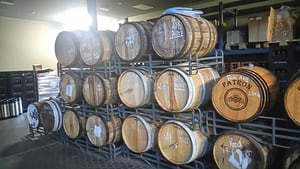
Among the bands I saw play was called Boy, whose entertaining music was a mix of pop and indie rock. The setting for this was inside the grand Saint Pauli Church.
St Pauli is lined with a lot of graffiti and street art – similar to places like Whitechapel in London. It is an arty and urban district, with its own unique outlook and way of thinking. I was told by another tour guide that Banksy – the well-known British street artist – had produced artwork within St Pauli, before it was painted over.
It also has one of Hamburg's two professional football teams. St Pauli FC play in Germany's second tier of football – Bundesliga B. The club often has a skull and cross bones symbol used by supporters, and has developed a cult following in the past few decades.
The waterways of Hamburg have been an important part of life to the city. The canals run on to the River Elbe, and Hamburg also has the two lakes on the Alster tributary. From the latter, you can hop aboard boat trips which offer guided tours allowing you to take in great panoramic views of the city.
Restaurants will often serve up fish on their menus, including fresh water shrimps. But other meals are similar to back home in England, such as the traditional fish and chips.
The Ratsheern Brewery, located in St Pauli, offered great tasting beer, which could be sampled on tours of the brewery. These included lager – both blonde and even red coloured – alongside ales.
The overground and underground train lines made navigating Hamburg easy, so travelling by car was not essential.
I stayed at the Hotel Reichshof during my trip, which is located right across the road from Hamburg's central train station, Hauptbahnhof. It was a traditional and clean hotel.
A gleaming marble floor welcomed you into the reception lobby. Inside the rooms were spread across six storeys. Also inside was a restaurant, a bar, and sports and spa facilities.
After five days experiencing the city, I found Hamburg a warm city with real character, culture and authenticity.
Each district offered something different – shopping, history, art, museums and entertainment.
Hamburg would make an enjoyable getaway trip for a city break, whatever time of year, where you can find a genuine look into modern Germany.
By Jamie Brassington

